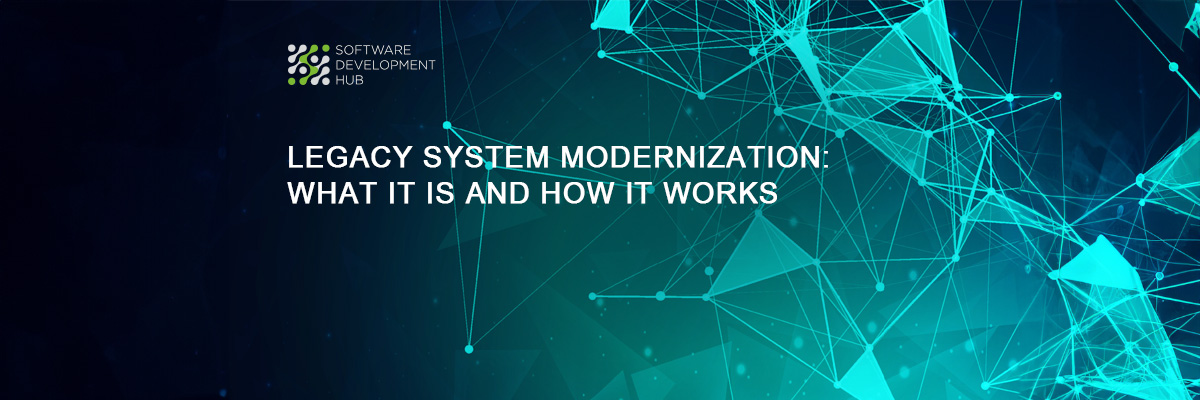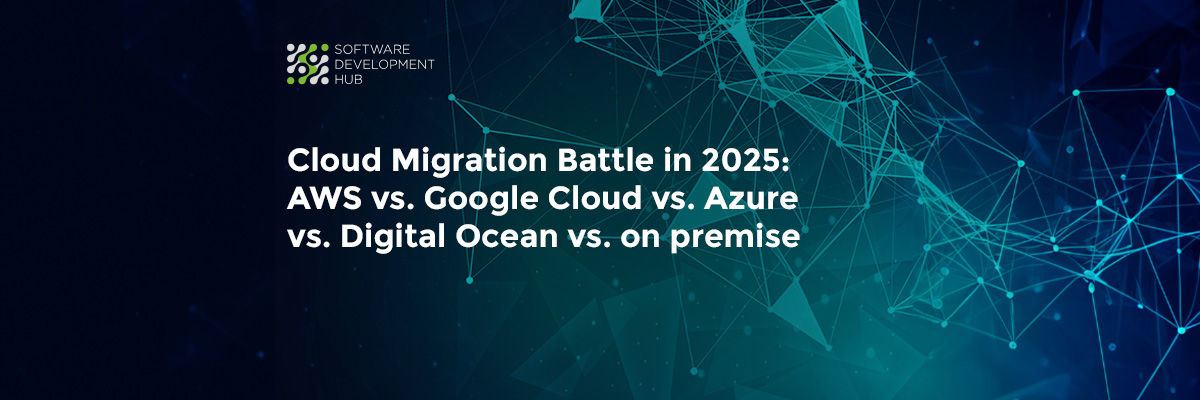Legacy System Modernization: Approaches in 2024
Outdated software is one of the reasons why it is not possible to adapt a business to new requirements and tasks. Therefore, software modernization is a key goal for companies that aim to strengthen their competitive position. Below, we will tell you how to avoid common mistakes when upgrading and what the benefits of such improvements are.
What is Legacy System Modernization?
Legacy system modernization refers to the process of upgrading or replacing outdated software and hardware systems within an organization. These legacy systems, often characterized by obsolete technology, outdated interfaces, and inefficient processes, pose challenges to the overall productivity and competitiveness of a business. In 2024, as technology continues to advance at a rapid pace, the need for legacy system modernization has become more critical than ever.
Read also: 5 Best Practices to Data Architecture Modernization in 2024
Why Do You Need Legacy System Modernization?
Legacy Software Requires Big Investments for Its Maintenance
One of the primary reasons for considering legacy system modernization is the substantial investment required to maintain outdated enterprise software. Legacy systems demand continuous support, which often involves high costs for troubleshooting, patching, and adapting to changing business needs. These expenses can accumulate over time, draining financial resources that could be better utilized for innovation and growth.
Shortage of Professionals That Can Support Legacy Systems
Another compelling reason for modernizing legacy systems is the scarcity of professionals with expertise in maintaining and supporting outdated technologies. As technology evolves, the workforce naturally gravitates toward acquiring skills in newer and more relevant areas. This shortage of skilled professionals can lead to prolonged system downtimes, increased vulnerability to errors, and an overall decline in system reliability.
For example, legacy systems might be written in programming languages that are no longer widely taught or used in modern development, such as FORTRAN, COBO, or Pascal. The scarcity of developers proficient in these languages can pose a challenge when updates or modifications are needed.
Legacy Systems Are Very Inflexible
Legacy systems are often characterized by rigid structures that limit adaptability and hinder the integration of new functionalities. In today's dynamic business environment, where agility and flexibility are paramount, inflexible legacy systems can impede the organization's ability to respond quickly to market changes, implement innovative solutions, and stay competitive.
Some organizations continue to use outdated database systems such as old versions of Oracle. Maintaining and optimizing these systems can be difficult, leading to potential vulnerabilities and performance issues.
Legacy Software Is Vulnerable to Cyber-Attacks
Outdated software and hardware are more susceptible to security vulnerabilities, making them attractive targets for cyber-attacks. As cyber threats continue to evolve, legacy systems become increasingly challenging to secure, putting sensitive business data at risk. Legacy system modernization is crucial for implementing robust security measures and safeguarding the organization against potential breaches.
One notable example of a cyber-attack on legacy software is the case of the WannaCry ransomware attack in 2017. The ransomware exploited a vulnerability in the Server Message Block (SMB) protocol, which is used for file and printer sharing on networks. The specific vulnerability, known as EternalBlue, had been patched by Microsoft in March 2017, but many systems, especially those running older and unsupported versions of Windows like Windows XP, had not applied the update. Legacy systems, often running outdated operating systems, were disproportionately affected by WannaCry. Many organizations in healthcare, finance, and manufacturing still rely on legacy software that requires older operating systems. The attack disrupted operations in hospitals, businesses, and government agencies globally.
The WannaCry attack highlighted the risks associated with using outdated software and the importance of keeping systems up-to-date with security patches. Organizations relying on legacy systems are particularly susceptible to such attacks if they do not take proactive measures to secure their infrastructure.
Read also: How to Improve Cybersecurity in Healthcare
Legacy Systems Don't Comply with Modern Regulations
With the constant evolution of industry regulations and compliance standards, legacy systems often struggle to keep up. Non-compliance can result in legal ramifications, financial penalties, and damage to the organization's reputation. Legacy system modernization ensures that the software and hardware align with current regulatory requirements, reducing the risk of legal issues and ensuring a smooth operation within the legal framework.
Read also: Requirements for Cybersecurity Ensuring of Healthcare IoT Systems
Legacy System Modernization Approaches
To address the challenges posed by legacy systems, various modernization approaches have emerged, each with its own set of advantages and considerations. These approaches include:
- Rehosting or "Lift and Shift" involves migrating the existing legacy system to a modern infrastructure without making significant changes to the application. While this approach is relatively quick and cost-effective, it may not fully address underlying inefficiencies.
- Replatforming. In this approach, the organization retains the existing codebase but upgrades the underlying infrastructure or platform. This allows for some degree of modernization while minimizing the risk and cost associated with a complete overhaul.
- Refactoring or Re-architecting involves restructuring the codebase and architecture of the legacy system to align with modern standards. While more time-consuming and expensive, refactoring offers the opportunity to enhance performance, scalability, and maintainability.
- Replacement: In some cases, organizations opt for a complete replacement of the legacy system with off-the-shelf solutions or custom-built applications. This approach provides the most flexibility but requires careful planning and execution to ensure a smooth transition.
What Legacy System Modernization Approachs are Best for Your Business?
Determining the most suitable modernization approach depends on various factors, including the organization's budget, timeline, business objectives, and the complexity of the existing legacy system. A comprehensive assessment of the current system's strengths and weaknesses is crucial to making an informed decision.
If the primary concern is minimizing costs and achieving a quick transition, rehosting or replatforming may be viable options. However, if the goal is to optimize performance, scalability, and long-term flexibility, refactoring or replacement may be more appropriate.
Collaboration with experienced IT professionals and consultants is essential during the decision-making process. These experts can conduct a thorough analysis, recommend the most fitting approach, and guide the organization through the entire modernization journey.
Legacy System Modernization Company
Modernizing legacy systems is not just a technology upgrade, but a strategic imperative for businesses looking to thrive in today's competitive environment. By addressing the challenges associated with legacy systems, enterprises can unlock new opportunities, improve operational efficiency, and prepare for future success. The Software Development Hub company selects the right modernization approach that meets the unique needs and goals of the business.
Categories
Share
Need a project estimate?
Drop us a line, and we provide you with a qualified consultation.









